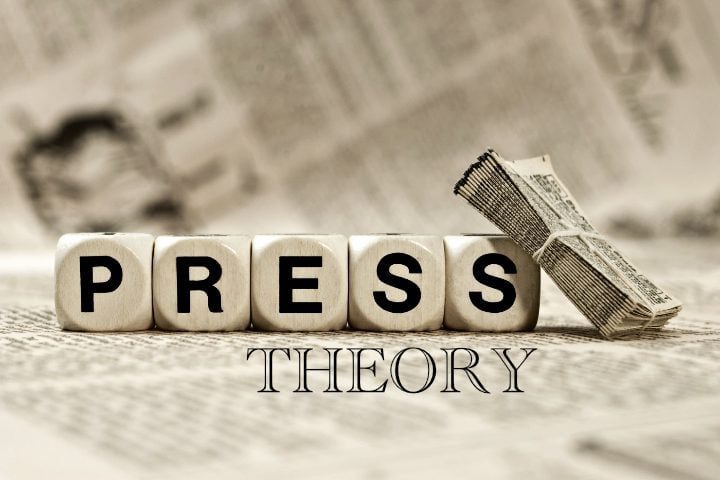Normative Theory
Normative theories in mass communication describe how media systems should operate in society. They provide ideals and standards for media behavior and structure. The main normative theories include:
- Authoritarian Theory
- Libertarian Theory
- Social Responsibility Theory
- Soviet Communist Theory
- Development Media Theory
- Democratic Participant Theory
Key proponents and timeline:
| Theory | Key Concepts | Proponents | Timeline |
| Authoritarian Theory | Media should support the government’s agenda | Siebert, Peterson, Schramm | 1956 |
| Libertarian Theory | Media should have complete freedom of expression | Siebert, Peterson, Schramm | 1956 |
| Soviet Communist Theory | Media should serve the interests of the working class | Siebert, Peterson, Schramm | 1956 |
| Social Responsibility Theory | Media should serve the public and be socially responsible | Siebert, Peterson, Schramm | 1956 |
| Development Media Theory | Media should support national development in developing countries | Robert White | 1982 |
| Democratic Participant Theory | Media should prioritize the needs of citizens and encourage participation | Denis McQuail | 1960s-1970s |
Key Developments:
| Decade | Key Developments |
| 1940s-1950s | Siebert, Peterson, and Schramm developed “Four Theories of the Press” (1956) |
| 1960s-1970s | Denis McQuail expands on existing theories and contributes to the Democratic Participant Theory |
| 1980s | Robert White introduces Development Media Theory (1982) |
| 1990s-2000s | Christians, Glasser, McQuail, Nordenstreng, and White refine and critique these theories in “Normative Theories of the Media” (2009) |
These theories have evolved over time to address changing media landscapes and societal needs. They continue to influence media policy, ethics, and practice worldwide.
Let’s examine each of these theories in detail:
Authoritarian Theory
The authoritarian theory is one of the oldest normative theories of mass communication. It contends that the state or the ruling elite should control and serve the interests of all forms of mass communication. Under this theory, the media is seen as a tool to support and advance the policies of the government in power.
Authoritarian theory has its roots in the authoritarian political philosophy of the 16th and 17th centuries, particularly in the works of Plato, Machiavelli, and Hobbes. However, it was formally articulated as a theory of the press by Fred S. Siebert, Theodore Peterson, and Wilbur Schramm in their 1956 book “Four Theories of the Press.”
Key principles
- The media should support and advance the policies of the government in power.
- The media should not criticize the political machinery or officials in power.
- The censorship of media is justifiable in enforcing these principles.
- Media professionals are not allowed to have any independence within the media organization.
- The government may punish anyone who questions the state’s ideology.
Influence
The authoritarian theory has been influential in shaping media systems in various parts of the world, particularly in:
- Autocratic regimes: Many dictatorships and one-party states have adopted this model.
- Colonial administrations: European powers often applied this theory in their colonies.
- Some developing nations: Post-independence from colonial powers, some countries maintained strict media control.
Historical examples include Nazi Germany, fascist Italy, and Spain under Franco. More recent examples can be found in North Korea, Cuba, and, to varying degrees, in countries like China and Russia.
Criticism
The authoritarian theory has faced significant criticism, particularly from advocates of press freedom and democracy:
- It restricts freedom of expression and the press.
- It prevents the media from fulfilling its watchdog role in society.
- It can lead to the spread of propaganda and misinformation.
- It obstructs the growth of an informed public.
- Stifling diverse viewpoints and innovations can hinder social, political, and economic progress.
Relevance
While the authoritarian theory is generally considered outdated in democratic societies, it remains relevant in several contexts:
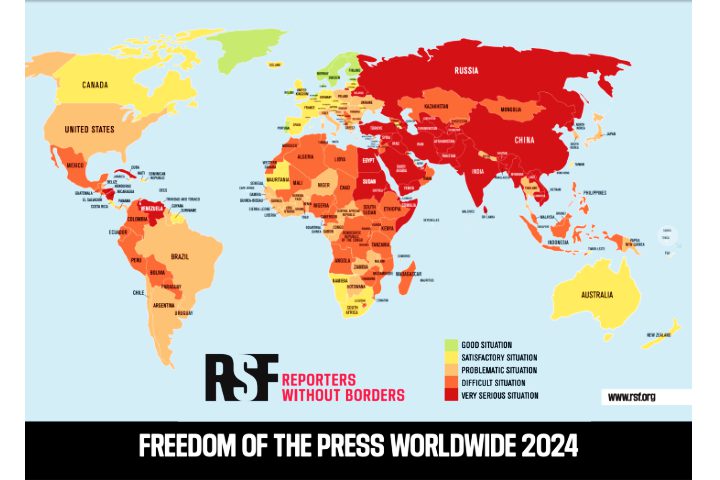
- Understanding media systems: It provides a framework for analyzing media control in non-democratic countries.
- Digital authoritarianism: Some governments apply authoritarian principles to control online media and social platforms.
- Press freedom indices: Organizations like Reporters Without Borders measure press freedom by the absence of authoritarian control.
- Media literacy: Understanding this theory helps citizens recognize and critically evaluate authoritarian tendencies in media systems.
- Soft authoritarianism: Some nominally democratic countries show authoritarian tendencies in media control, making this theory relevant for analysis.
- Crises: Even in democracies, governments may invoke temporary authoritarian-like control over media during national emergencies.
- Corporate media control: Critics argue that concentration of media ownership can lead to private authoritarianism.
Implications
The authoritarian mass communication theory has far-reaching implications affecting various societal aspects. Let’s explore these implications in detail:
- Political: Consolidates power, limits political discourse, reduces government accountability, and enables propaganda.
- Social: Restricts information flow, controls culture, promotes conformity, and weakens civil society.
- Economic: Allows state control of the media industry and economic information, potentially suppressing innovation.
- Journalistic: This leads to self-censorship, lack of press freedom, and potential dangers for journalists.
- International Relations: This can cause information isolation and diplomatic tensions.
- Technological: This may result in internet censorship and increased surveillance.
- Educational: This can lead to controlled curricula and limited critical thinking development.
- Psychological: Might cause fear, self-censorship, and cognitive dissonance among citizens.
- Long-term Societal: Can restrict democratic development, enable historical revisionism, and shape societal attitudes across generations.
The implications show why the authoritarian theory faces significant criticism in democratic societies. Understanding these implications is essential for identifying authoritarian tendencies in media systems, even in nations that claim press freedom. It emphasizes the importance of maintaining free and independent media to support democratic principles and enable an informed public.
Libertarian Theory
The libertarian theory of the press emerged in the 17th and 18th centuries, primarily in England and later in the United States. It developed as a reaction against the authoritarian approach to press control prevalent in Europe at the time.
Key figures in its development include:
- John Milton (1608-1674): His work “Areopagitica” (1644) argued against censorship and for freedom of expression.
- John Locke (1632-1704): His writings on natural rights and limited government influenced libertarian thought.
- John Stuart Mill (1806-1873): His essay “On Liberty” (1859) further developed ideas of individual freedom and free speech.
Example: The American Revolution and the subsequent drafting of the U.S. Constitution, particularly the First Amendment, exemplify the practical application of libertarian principles in mass communication.
Key Principles
1. Freedom of expression: Individuals should have the right to express their thoughts and opinions without government interference.
2. Marketplace of ideas: Truth emerges from the free competition of ideas in open debate.
3. Self-righting process: Given enough time and discourse, truth will prevail over falsehood.
4. Minimal government intervention: The government should have limited power to regulate the press or other forms of communication.
5. Individual autonomy: People are rational beings capable of discerning truth from falsehood.
Example: The diverse range of media outlets in the United States, from conservative Fox News to liberal MSNBC, illustrate the libertarian principle of a marketplace of ideas.
Influence
The Libertarian Theory has significantly influenced media systems in Western democracies:
1. Press freedom laws: Many countries have constitutional protections for freedom of speech and press.
2. Diverse media landscape: It has encouraged the development of varied media outlets catering to different perspectives.
3. Watchdog role: The media often acts as a check on government power, exposing corruption and misconduct.
4. Public discourse: It has fostered a culture of open debate and discussion on public issues.
Example: The Pentagon Papers case (New York Times Co. v. United States, 1971) demonstrated the influence of libertarian principles in U.S. jurisprudence, prioritizing press freedom over government secrecy.
Criticism
Despite its widespread influence, the Libertarian Theory has faced several criticisms:
1. Concentration of media ownership: Critics argue that a few powerful entities can dominate the marketplace of ideas.
2. Misinformation and fake news: The theory may not adequately address the spread of false information in the digital age.
3. Inequality of access: Not all voices have equal opportunities to be heard in the marketplace of ideas.
4. Profit motive: Commercial interests may override public interest in media operations.
5. Lack of social responsibility: The theory may not sufficiently emphasize the media’s role in serving society’s needs.
Example: The spread of misinformation on social media platforms during elections across the world highlights the challenges posed to the libertarian ideal of a self-righting marketplace of ideas.
Relevance
The Libertarian Theory remains relevant in the 21st century, particularly in discussions about:
1. Internet freedom and regulation
2. Social media content moderation
3. Net neutrality
4. Digital privacy rights
5. Global press freedom
Example: Debates over Section 230 of the Communications Decency Act in the U.S., which provides liability protection for internet platforms, reflect ongoing tensions between libertarian principles and calls for increased regulation.
Section 230 of the 1996 Communications Decency Act states that interactive computer service providers or users are not considered publishers or speakers of information supplied by other content providers.
Section 230 permits social platforms to manage their services by deleting posts that may be deemed obscene or that breach the platforms’ own guidelines, provided they operate in “good faith.”
This has enabled companies such as Facebook, Twitter, and Google to become the giants they are today.
Implications
The Libertarian Theory has far-reaching implications for media systems and society:
1. Legal framework: It shapes media laws and regulations in many countries.
2. Media ethics: It influences journalistic norms of objectivity and balanced reporting.
3. Technological innovation: It encourages the development of new communication platforms and technologies.
4. Global communication: It promotes cross-border information flow and cultural exchange.
5. Democratic participation: It fosters public engagement in political processes through informed debate.
Example: The rise of citizen journalism and user-generated content platforms like YouTube exemplifies the democratizing potential of libertarian principles in the digital age.
In conclusion, while the Libertarian Theory of mass communication continues to shape media systems and public discourse, it faces new challenges in the complex landscape of 21st-century digital communication. Balancing its core principles with emerging concerns about misinformation, privacy, and media responsibility remains a crucial task for policymakers, media professionals, and society at large.
Social Responsibility Theory
The Social Responsibility Theory of the press emerged in the mid-20th century, primarily in response to criticisms of the libertarian model of the press. Its formal declaration came in 1947 through the Hutchins Commission report titled “A Free and Responsible Press.”
The theory developed in the United States during a time of growing concern about the commercialization of the press and its potential negative impacts on society. It was a response to the perceived failings of the libertarian model, which emphasized freedom of the press but didn’t address the responsibilities that should come with that freedom.
Key figures in its development included Robert Maynard Hutchins, who chaired the Commission on Freedom of the Press, and Theodore Peterson, who further expanded on the theory in his 1956 book “Four Theories of the Press.”
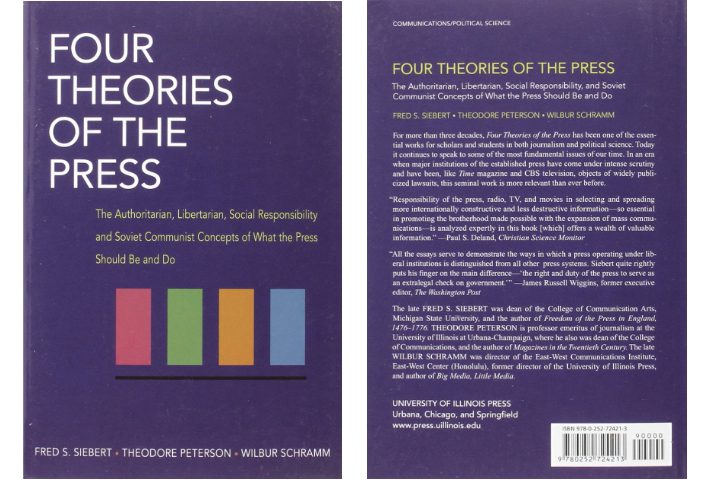
Key Principles
The Social Responsibility Theory is built on several key principles:
- Media Obligation to Society: The press has an obligation to society to provide truthful, comprehensive, and intelligent accounts of daily events in a context that gives them meaning.
- Self-Regulation: The media should self-regulate within the framework of law and established institutions.
- High Professional Standards: The media should maintain high standards of professionalism, accuracy, truth, and objectivity.
- Acceptance of Social Responsibility: Media practitioners and organizations should accept and fulfill certain obligations to society.
- Reflection of Diversity: The media should be pluralistic and reflect the diversity of their society, giving access to various points of view and rights of reply.
- Public Interest Priority: Journalists’ primary mission should be protecting the public’s right to know, prioritizing public interest over profit motives.
- Accountability: Journalists and media organizations should be accountable to society for their reports and actions.
Influence
The Social Responsibility Theory has had a significant influence on media practices and policies worldwide:
- Ethics Codes: It has inspired the development of professional codes of ethics in journalism. For example, the Press Council of India Journalists’ Code of Conduct reflects many of the theory’s principles.
- Public Broadcasting: The theory influenced the establishment of public broadcasting systems in many countries. For instance, these ideas inspired the creation of the Prasar Bharti for Public Broadcasting in India in 1997.
- Media Regulation: It has shaped media regulation policies in various countries. The UK’s Office of Communications (Ofcom), established in 2003, embodies many of the theory’s principles in its regulatory approach.
- Journalism Education: The theory has become a cornerstone in journalism education, emphasizing the importance of ethical reporting and social responsibility.
- Corporate Social Responsibility in Media: Many media organizations have adopted CSR policies that align with the theory’s principles. For example, The Indian Express Group’s CSR strategy reflects a commitment to social responsibility.
Criticism
Despite its influence, the Social Responsibility Theory has faced several criticisms:
- Vague Definition of Responsibility: Detractors claim that the term “social responsibility” is unclear and open to various interpretations by different parties.
- Idealistic Nature: Critics contend that the theory is too idealistic and doesn’t account for the practical realities of media economics and competition.
- Western Bias: The theory has been criticized for being too rooted in Western, particularly American, values and may not be universally applicable.
- Conflict with Profit Motive: In practice, the theory’s principles often conflict with the profit-driven nature of many media organizations.
Relevance
Despite these criticisms, the Social Responsibility Theory remains relevant in the 21st century:
- Digital Age Challenges: In an era of social media and citizen journalism, the theory’s emphasis on responsibility and accuracy is more important than ever.
- Fake News and Misinformation: The theory’s principles of truth and accuracy are crucial in combating the spread of misinformation online.
- Media Concentration: As media ownership becomes more concentrated, the theory’s emphasis on diversity and public interest remains relevant.
- Trust in Media: In an era of declining trust in media, the theory’s principles of accountability and high standards offer a path to rebuilding public confidence.
Implications
The Social Responsibility Theory has several important implications for media practice and policy:
- Self-Regulation Mechanisms: It encourages the establishment of press councils, ombudsmen, and other self-regulatory bodies within the media industry.
- Balancing Act: Media organizations must balance their business roles with their responsibilities to the public good.
- Diversity in Newsrooms: The theory implies a need for diverse representation in newsrooms to ensure comprehensive coverage of society.
- Media Literacy: It underscores the importance of media literacy education in creating an informed public that can hold the press accountable.
- Ethical Decision-Making: Journalists and editors must constantly weigh ethical considerations in their work, often in fast-paced, high-pressure environments.
- Policy Considerations: Policymakers must consider encouraging responsible media practices without infringing on press freedoms.
In conclusion, while the Social Responsibility Theory has its critics and faces challenges in implementation, its core principles continue to shape discussions about the role of media in society and inform efforts to ensure that the press serves the public interest.
Here is a brief overview of media regulatory bodies in India for different types of media:
| Media Type | Regulatory Bodies | Key Regulations/Acts | FDI Cap |
|---|---|---|---|
| Print Media |
|
| 26% |
| Cinematograph Films |
| Cinematograph (Amendment) Act, 2023 | N/A |
| Broadcasting |
| Cable Television Networks (Regulation) Act | 49% |
| Digital Media |
| Information Technology (Intermediary Guidelines and Digital Media Ethics Code) Rules, 2021 | N/A |
Additional Organizations Involved in Media Regulation:
- Press Information Bureau (PIB)
- Prasar Bharati (autonomous public broadcaster)
- National Film Development Corporation (NFDC)
- Films Division
The regulatory landscape for digital media is still evolving, and the government aims to create a unified framework for all media types.
Soviet Communist Theory
The Soviet Communist Theory of the Press emerged in the early 20th century, following the 1917 Russian Revolution and the establishment of the Soviet Union.
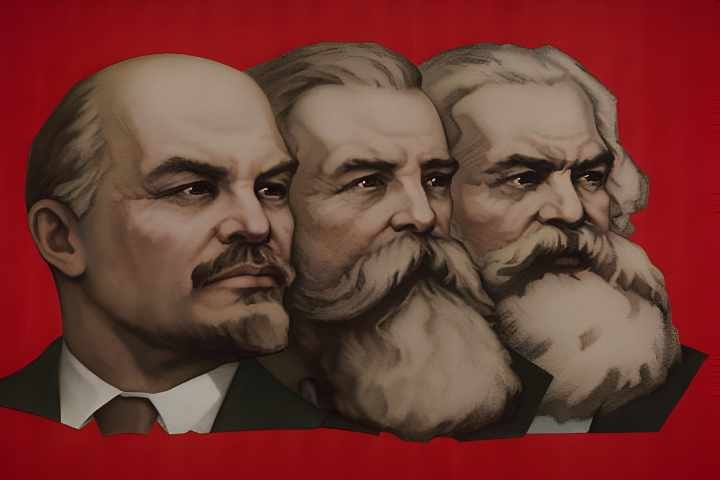
It was developed as part of the broader communist ideology, largely influenced by the works of Karl Marx, Friedrich Engels, and Vladimir Lenin. The theory was formalized and implemented under Joseph Stalin’s leadership in the 1930s.
Key principles
1. State ownership: The communist party or the state should own and control all media.
2. Propaganda tool: The press serves as an instrument for spreading communist ideology and supporting the party’s goals.
3. Positive news focus: Media should emphasize positive developments and achievements of the communist system.
4. Criticism within limits: Criticism is allowed but only within the framework of communist ideology and party decisions.
5. Educational role: The press should educate the masses about communist principles and promote socialist values.
6. Collectivism over individualism: The needs of society as a whole are prioritized over individual interests.
Influence
The Soviet Communist Theory of the Press had a significant impact on media systems in communist countries throughout the 20th century. Some examples include:
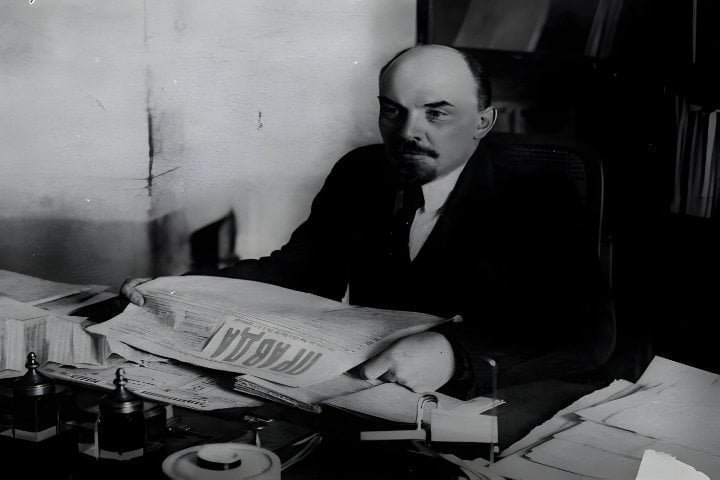
1. USSR: Pravda, the official newspaper of the Communist Party, became the primary source of news and information for Soviet citizens.
2. China: The People’s Daily, controlled by the Chinese Communist Party, follows similar principles in modern-day China.
3. Cuba: Granma, the official newspaper of the Cuban Communist Party, adheres to many aspects of this theory.
4. Eastern Europe: During the Cold War, countries in the Soviet bloc adopted similar media systems, such as East Germany’s Neues Deutschland.
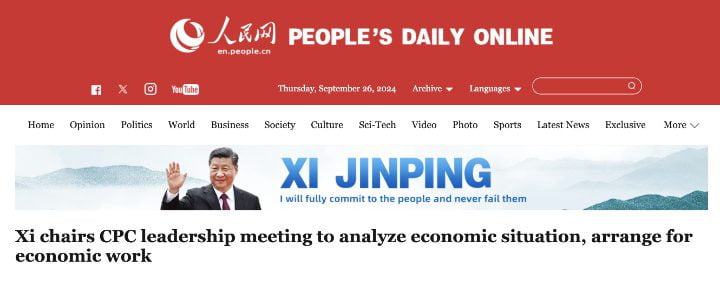
Criticism
The theory has faced substantial criticism, particularly from Western scholars and advocates of press freedom:
1. Lack of press freedom: It severely restricts freedom of expression and independent journalism.
2. Propaganda concerns: The media becomes a tool for manipulation rather than objective information dissemination.
3. Lack of accountability: Without independent media, holding the government accountable is difficult.
4. Limited diversity of views: The theory suppresses alternative perspectives and debates.
5. Inefficiency: State-controlled media can become bureaucratic and unresponsive to audience needs.

Relevance
While the Soviet Union has dissolved, aspects of this theory remain relevant in several contexts:
1. Authoritarian regimes: Some countries still maintain strict state control over media, echoing elements of this theory.
2. Digital age propaganda: The principles of using media for state propaganda have evolved in the era of social media and online disinformation.
3. Media literacy: Understanding this theory helps in critically analyzing media systems and recognizing propaganda.
4. Comparative media studies: It is a contrasting model to liberal press theories in academic discourse.
Implications
The Soviet Communist Theory of the press has had lasting implications:
1. Press freedom indices: It has influenced how we measure and value press freedom globally.
2. Media pluralism: The theory’s shortcomings have highlighted the importance of diverse media ownership and viewpoints.
3. Watchdog journalism: Its criticism has reinforced the value of independent, investigative journalism in democratic societies.
4. Information warfare: Understanding this theory is crucial in analyzing modern information manipulation tactics by state actors.
5. Media ethics: It has contributed to ongoing debates about the press’s role and responsibilities in society.
In conclusion, while the Soviet Communist Theory of the Press is no longer dominant, its study remains crucial for understanding media systems, recognizing propaganda, and appreciating the value of press freedom in democratic societies.
Development Media Theory
The Development Media Theory emerged in the 1960s and 1970s as a response to the perceived inadequacies of existing press theories in addressing the needs of developing nations. Scholars like Wilbur Schramm, Daniel Lerner, and Lucian Pye were primarily responsible for developing it.
This theory arose from recognizing that Western media models were not always suitable for countries undergoing rapid social and economic development. During the post-colonial era, many nations in Africa, Asia, and Latin America sought to establish their own media systems that could support national development goals.
Key Principles
1. Media should support national development efforts.
2. Press freedom can be restricted for economic priorities and development needs.
3. Media should prioritize cultural and informational content over entertainment.
4. Journalists have responsibilities as well as freedoms in nation-building.
5. The state has a right to intervene in media operations for development purposes.
6. Media should give priority to national languages and cultures.
Influence
The Development Media Theory has significantly influenced media policies and practices in many developing countries. For example:
1. In India, Doordarshan (the national public broadcaster) was established with a mandate to promote education and national integration.
2. Tanzania’s media policies under Julius Nyerere emphasized using media for rural development and education.
3. China’s media system, while not entirely based on this theory, incorporates elements of it in its approach to using media for national development.
Criticism
The theory has faced several criticisms:
1. It can be used to justify government control and censorship of media.
2. It may limit the media’s role as a watchdog against government corruption.
3. The theory assumes a paternalistic relationship between the state and its citizens.
4. It may hinder the development of a pluralistic media landscape.
5. The theory can be seen as outdated in the age of global digital media.
Relevance
Despite criticisms, the Development Media Theory remains relevant in several contexts:
1. In countries still grappling with basic development issues, the theory provides a framework for using media to support national goals.
2. It offers an alternative perspective to Western-centric media theories.
3. The theory’s emphasis on cultural preservation is relevant in the face of global media homogenization.
4. Its principles can be adapted to address contemporary issues like sustainable development and climate change awareness.
Implications
The Development Media Theory has several implications:
1. For media professionals: It urges journalists to balance their independence as watchdogs with their duties to national development.
2. For policymakers: It offers a justification for media regulations that support development objectives.
3. For the public: This may lead to media content that is more educational and developmental but possibly less diverse.
4. For international relations: It can lead to tensions between countries with different media philosophies, particularly regarding press freedom issues.
5. For media education: It requires a curriculum that incorporates non-Western perspectives on media roles and responsibilities.
Democratic Participant Theory
The Democratic Participant Theory of the Press emerged in the 1970s as a response to the increasing commercialization and concentration of media ownership. Denis McQuail, a well-known communication theorist, first put forth the idea in his 1983 book Mass Communication Theory: An Introduction.
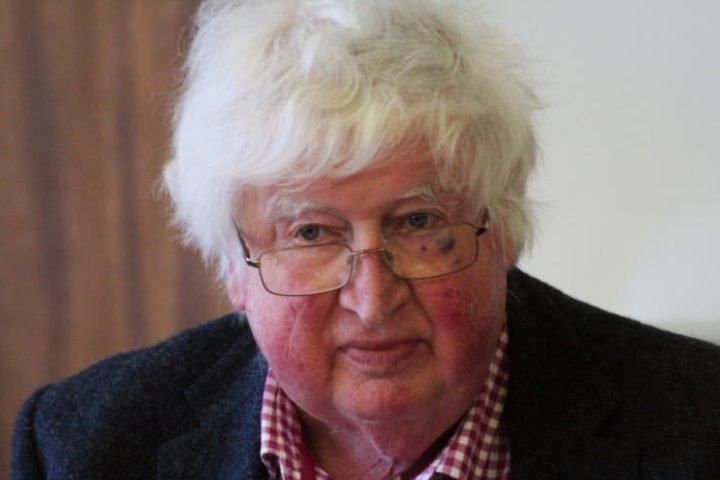
This theory arose from a growing dissatisfaction with the existing media systems models, particularly the social responsibility theory, which was seen as inadequate in addressing the needs of diverse communities and minority groups. The social and political movements of the 1960s and 1970s, which placed a strong emphasis on community empowerment and grassroots participation, had an influence on the theory.
Key Principles
1. Decentralization: The theory supports a media system with multiple small-scale outlets instead of a few large, dominant ones.
2. Participation: It highlights the active involvement of citizens in media production and decision-making.
3. Diversity: The theory promotes diversity in media content, ownership, and representation.
4. Horizontality: It promotes communication among citizens rather than top-down communication from elites to the masses.
5. Access: The theory emphasizes the need for universal access to media platforms and technologies.
6. Community focus: It emphasizes local and community-based media rather than national or international outlets.
Influence
The Democratic Participant Theory has significantly influenced media policy and practice in various ways:
1. Community media: It has inspired the development of community radio stations, local newspapers, and public access television channels.
2. Alternative media: The theory has provided a framework for alternative and activist media outlets that challenge mainstream narratives.
3. Media literacy: It has contributed to the growth of media literacy programs that empower citizens to engage critically with the media.
4. Digital platforms: The rise of social media and user-generated content platforms can be seen as a partial realization of the theory’s principles.
5. Policy reforms: Based on this theory, some countries have implemented policies to support community media and ensure diverse ownership.
Criticism
Despite its influential status, the Democratic Participant Theory has faced several criticisms:
1. Idealism: Critics argue that the theory is overly idealistic and difficult to implement fully in practice.
2. Quality concerns: Concerns about the potential decline in journalistic quality when professional standards are deemphasized exist.
3. Fragmentation: Some believe that too much decentralization may result in a fragmented public sphere and echo chambers.
4. Resource limitations: Small media outlets often face limited resources, impacting their sustainability and reach.
5. Digital divide: The theory’s focus on technological access may not fully address the issues related to the digital divide.
Relevance
The Democratic Participant Theory remains relevant in today’s media landscape for several reasons:
1. Digital age: The internet and social media have opened new avenues for citizen involvement in media creation and sharing.
2. Media concentration: Concerns about media ownership concentration highlight the importance of decentralization and diversity principles.
3. Grassroots movements: The theory connects with current grassroots movements that use media to drive social change.
4. Fake news: The theory highlights the importance of media literacy and critical engagement in a time of misinformation.
5. Global perspective: It provides a framework for understanding and supporting indigenous and minority media in a globalized context.
Implications
The Democratic Participant Theory has several implications for media systems and society:
1. Media policy: It calls for policies that promote diverse ownership and support community media initiatives.
2. Journalism education: The theory suggests that journalism education should focus on community engagement and participatory methods.
3. Technological development: It encourages the development of technologies that facilitate citizen participation in media.
4. Cultural production: The theory supports a more diverse and representative cultural landscape in media content.
5. Democratic processes: Promoting active citizen participation in media has implications for broader democratic engagement and decision-making.
6. Media business models: It challenges traditional commercial media models and encourages exploration of alternative funding mechanisms for community-based media.
Conclusion
The six normative theories of the press, each emerging from distinct historical and ideological contexts, provide valuable insights into the complex relationship between media, government, and citizens.
They remind us that societal values, political structures, and cultural norms significantly impact media systems and are not neutral entities.
Normative theory challenges us to critically examine our current media systems and ask fundamental questions:
- Who controls the flow of information?
- What responsibilities do media outlets have to society?
- How can we ensure diverse voices are heard?
Understanding the normative theory is more than an academic exercise. It provides us with the resources to champion media systems that genuinely benefit the public, uphold democratic principles, and cultivate an informed populace. As technology continues to reshape our media environment, these theories will undoubtedly evolve. However, their core principles—centered on the power and responsibility of the press—will remain vital guideposts in our ongoing conversation regarding the role of media in society.

